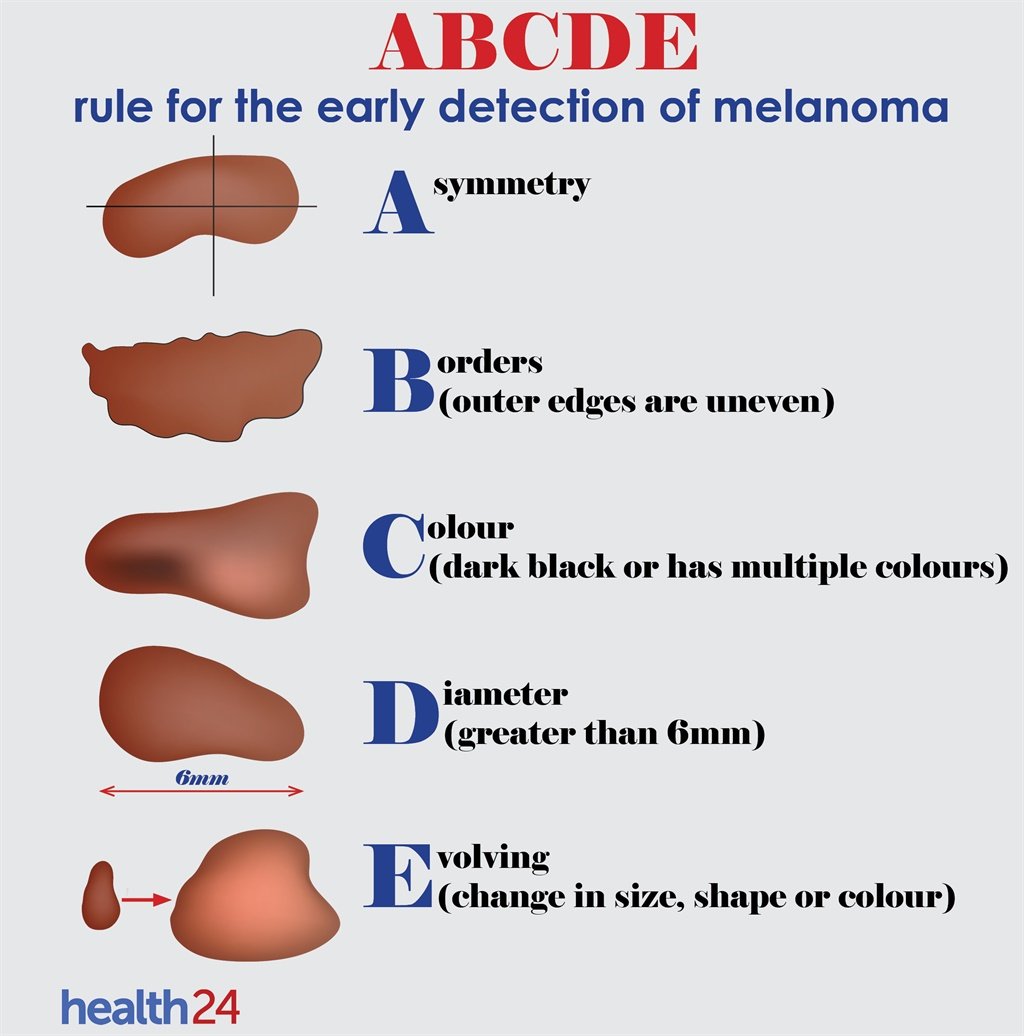Detect skin cancer early — here’s how


Early detection is critical for most cancers and will increase your chance of survival. Skin cancer is no different, and during the summer months we should be especially aware of the risks and how to spot potentially malignant changes in moles.
According to the Skin Cancer Foundation of South Africa, skin cancer can be divided into two major categories: melanoma and non-melanoma.
Melanoma is aggressive and can be life-threatening, but can be cured, especially if detected early, since this type of skin cancer spreads faster than others. A melanoma usually forms in highly pigmented areas of the body, such as on birthmarks.
While melanomas often occur on areas of the body that are commonly exposed to the sun, such as the chest, arms and legs, it can also appear in other parts of the body, such as the palms of the hands and soles of the feet, the nails or even in the eyes.
According to a dermatologist at a practice in Claremont, Cape Town, most people use the terms “mole examination” and “mole mapping” interchangeably, which is incorrect. A mole examination can be done by anyone, including yourself or your GP, while mole mapping is the extensive photographing and comparison of high risk moles, which can be quite costly. While mole mapping is a necessity for high risk candidates (those with a history of melanoma in the family, or those with moles covering a high percentage of the skin), a mole examination is crucial for everyone.
Know your own skin:
We tend to think that the stranger-looking the mole, the most likely the chance that it might be cancerous. This is not always true, as the most inconspicuous moles can be cause for concern. The Skin Cancer Foundation of South Africa uses the ABCDE method to determine the risk factor.

Here’s what you should look out for:
Asymmetry – One half of the mole is different to the other half.
Border – The border is irregular or poorly defined.
Colour – The colour varies from one area to another.
Diameter – Melanomas are often greater than 6mm in size, but can be much smaller before escalating.
Evolution – The evolution of a mole is probably the most important checkpoint for dermatologists and doctors. It’s important to know what your moles look like and when there are changes. As soon as a mole starts changing shape or size, or starts to itch or bleed, get it checked out as soon as possible.
Examine yourself
Make the time to properly examine your own moles and take note of any new moles, or changes in existing ones.
–Examine your entire head and face by using two mirrors, one to reflect the back of your head. Look out for moles on your scalp, underneath your hair, as these are frequently missed.
–Check your hands and nails. Even a slight discoloration of the nails can potentially be melanoma. Pay attention to your elbows and underarms.
–Check your neck and chest, as well as the area underneath your breasts (in women).
–Examine the back of your neck, shoulders, arms, back, buttocks and legs with a hand mirror.
–Sit down to check your legs and feet, including foot soles and nails.
–Inspect the areas surrounding your genitals when you’re in the shower.
Source – Health24
Sign Up to Our Newsletter
Get notified about exclusive offers every week!











